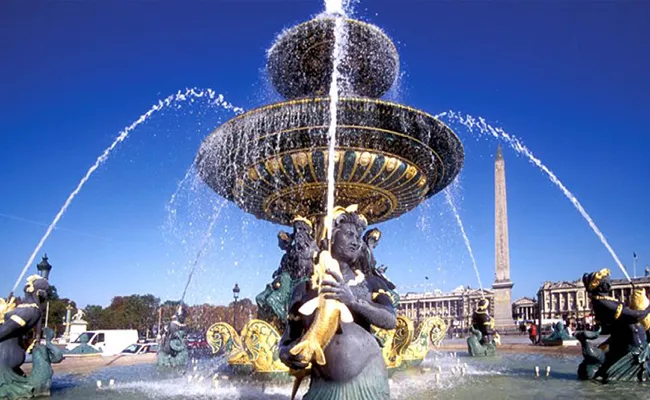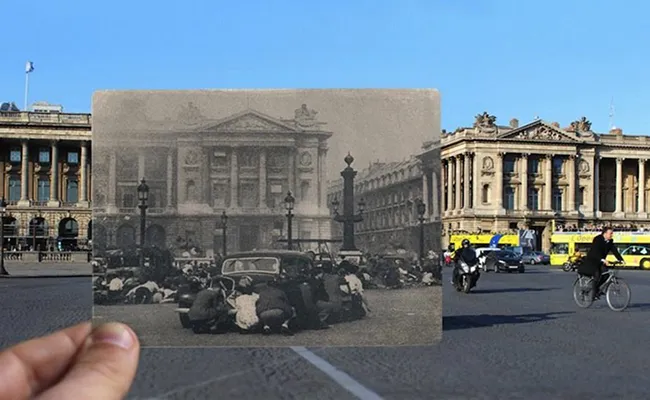France, the epitome of romance, is renowned not only for the Eiffel Tower and endless lavender fields but also for its rich historical tapestry. From ancient architectural marvels to expansive public squares, each landmark narrates a unique story, etching significant milestones into the annals of French history. Exploring these sites is like stepping back in time, immersing yourself in heroic tales and gaining a deeper appreciation for French culture.
Place de la Concorde: A Witness to Parisian History
Nestled along the romantic Seine River, Place de la Concorde, the largest square in Paris, stands as a silent witness to history’s ebbs and flows. From its inception to celebrate King Louis XV to the tumultuous years of the French Revolution, Concorde has endured numerous transformations, name changes, and pivotal historical events.

Originally built to honor King Louis XV, Place de la Concorde later became the execution site of King Louis XVI and Queen Marie Antoinette during the French Revolution.
From Glory to Bloodshed: A Tumultuous Past
Initially named Place Louis XV, the square was erected to celebrate this monarch. However, in the aftermath of the French Revolution, it became a public execution ground using the guillotine. King Louis XVI, Queen Marie Antoinette, and numerous other notable figures met their end here. During this dark period of French history, the square was renamed Place de la Révolution (Revolution Square).
A Symbol of Peace and Unity
Following these turbulent years, the square was renamed Concorde (Harmony) in 1795, reflecting a desire to heal old wounds and move towards a peaceful future. Today, Concorde stands as a symbol of national unity and reconciliation.
The Obelisk: A Gift from Egypt
The square’s centerpiece is the Obelisk, a gift from Egypt. This ancient monument, dating back over 3,300 years, was erected in the center of the square in 1833. The Obelisk not only serves as a unique architectural highlight but also symbolizes the diplomatic ties between France and Egypt.

Two magnificent fountains, known as the “Fountain of Rivers and the Fountain of Seas,” further enhance the square’s majestic beauty.
Fountains and City Statues
Place de la Concorde also features two stunning fountains and statues representing major French cities. These structures are not only aesthetically pleasing but also reflect France’s wealth and power.
Palace of Versailles: Emblem of Power and Opulence
Located a short distance from Paris, the Palace of Versailles epitomizes the power and extravagance of the French monarchy. Constructed during the reign of King Louis XIV, Versailles was not merely a royal residence but also the political and cultural heart of France.
Grandiose Architecture and Expansive Gardens
The Palace of Versailles impresses with its opulent architecture, lavish interiors, and meticulously designed expansive gardens. Every detail within the palace reflects the wealth and authority of the French royalty.
Hall of Mirrors: An Artistic Masterpiece
The Hall of Mirrors is among the most iconic features of the Palace of Versailles. With 17 large mirrors facing 17 windows, the hall creates a dazzling and magnificent space. It served as a venue for significant royal events and a place to entertain esteemed guests.

From a royal residence to a historical museum, the Palace of Versailles is an unmissable destination when exploring France.
A Witness to History
The Palace of Versailles has witnessed numerous pivotal moments in French history, from lavish royal festivities to the Treaty of Versailles that concluded World War I. Today, Versailles is a historical museum open to visitors for exploration and discovery.
Notre Dame Cathedral: A Gothic Architectural Masterpiece
Notre Dame Cathedral, a Gothic architectural gem, is situated on the Île de la Cité in the heart of the Seine River. With over 800 years of history, the cathedral is not only a significant religious edifice but also a cultural icon of France.
Unique Gothic Architecture
Notre Dame Cathedral is celebrated for its distinctive Gothic architecture, vibrant stained-glass windows, and intricate sculptural details. It is one of the most beautiful Gothic cathedrals in the world, attracting millions of visitors annually.
A Testament to Culture and History
Notre Dame Cathedral has been the backdrop for numerous important historical and cultural events in France, from royal coronations to concerts and religious festivals. The cathedral has also inspired many famous literary and artistic works.
The Fire and Restoration Process
The fire in 2019 caused severe damage to Notre Dame Cathedral. However, the French people and the international community rallied together to donate and support the restoration of this cultural symbol. The restoration process is expected to take many years, but Notre Dame Cathedral remains a symbol of resilience and hope.
Explore Other Historical Landmarks
Beyond these renowned sites, France boasts numerous other locations steeped in history, such as:
- Panthéon (Paris): The final resting place of distinguished French figures.
- Arc de Triomphe (Paris): The Arc de Triomphe, a symbol of victory and glory.
- Châteaux of the Loire Valley: Stunning architectural creations reflecting the wealth and power of the French nobility.
- Roman ruins in Southern France: Remnants of a glorious historical era.
Conclusion
The historical landmarks of France are not just captivating tourist destinations but also living pages of history, enriching our understanding of France’s past, culture, and people. Visit and explore these sites to gain a deeper appreciation for the beauty and allure of this hexagon-shaped nation.